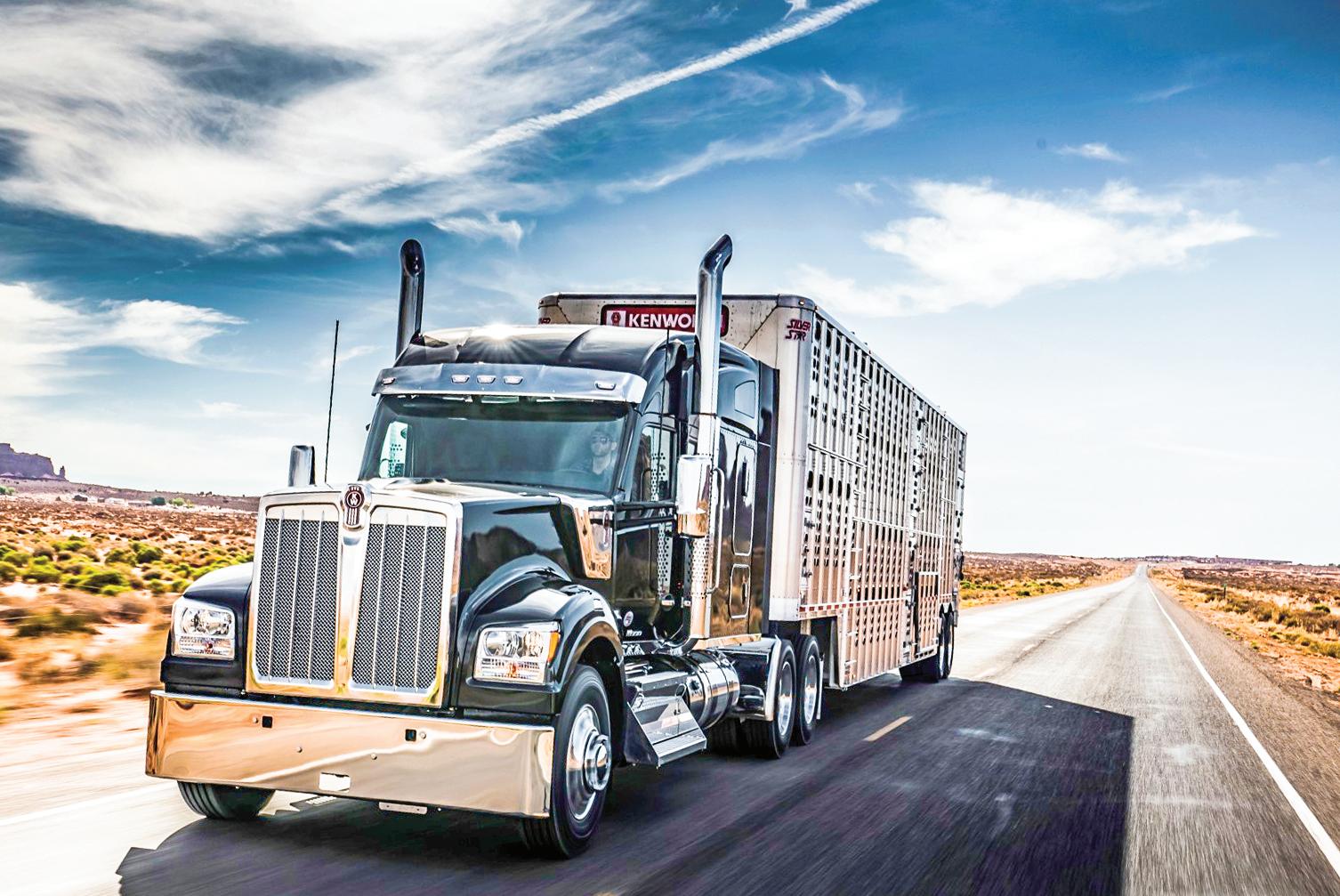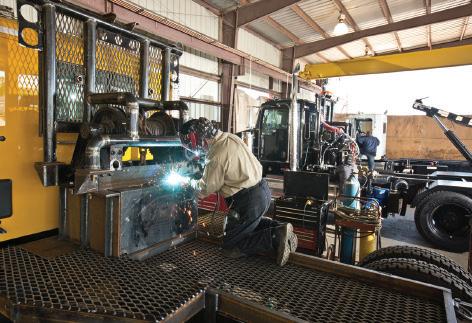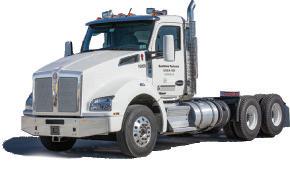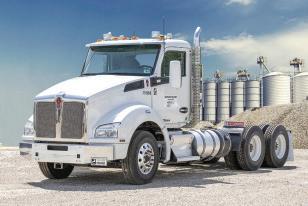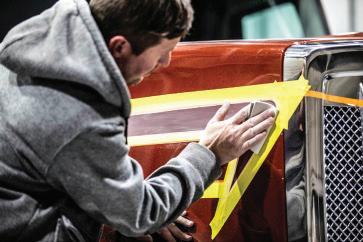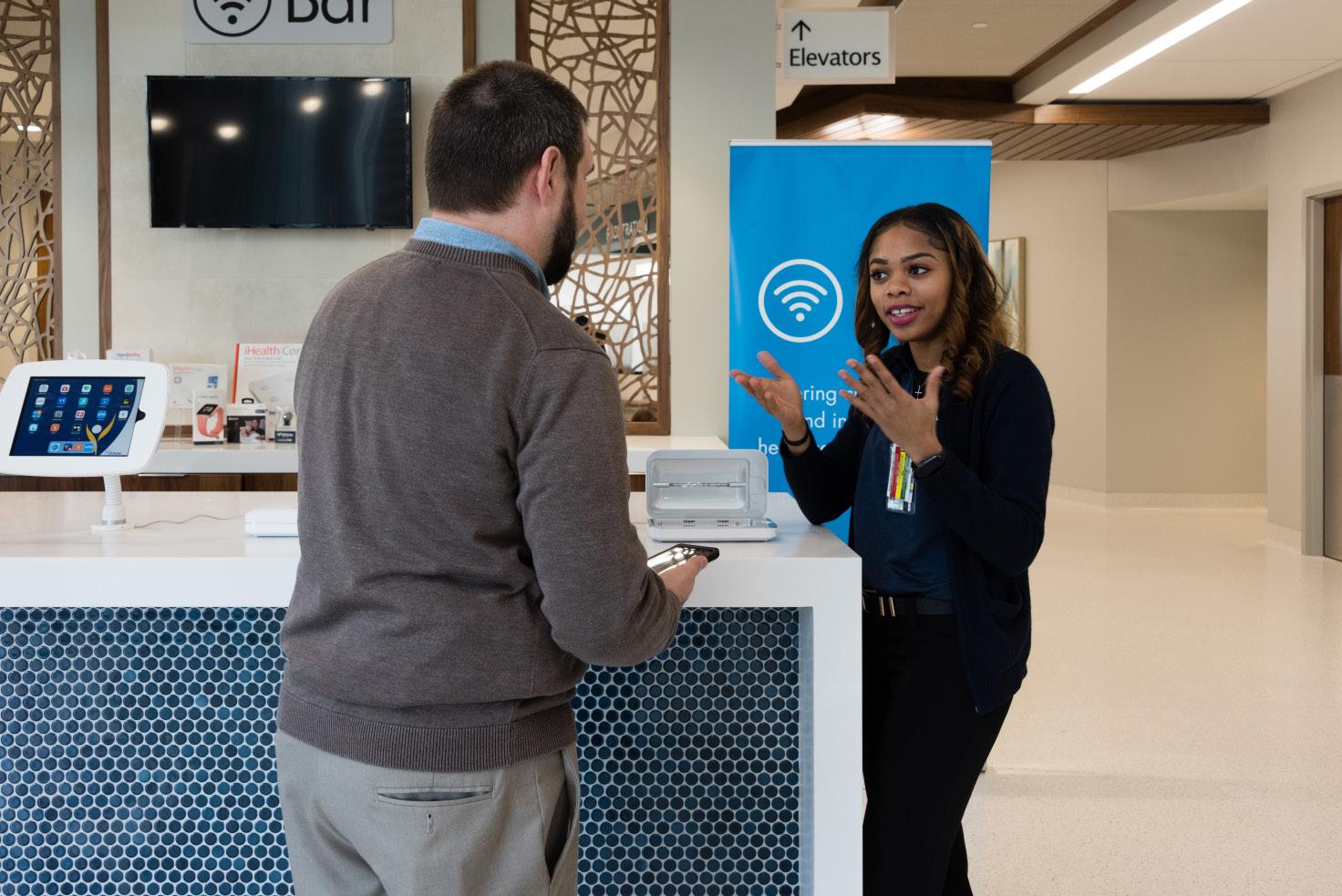
7 minute read
Healthcare
by LABI_Biz
The future of...
The Ochsner O Bar provides technical help for healthcare.
HEALTHCARE
Mobile medicine, workplace wellness and concierge care quickly becoming the norm
BY MARIAH HERNANDEZ
Agentleman walks up to the counter with his phone in his hand. His app isn’t working, or he isn’t working his app right. He chuckles, shaking his head, and hands his phone over to the technology expert who quickly identifies and clears up the problem, showing the man a few tips and tricks that ultimately opens his access to his own medical storyline. This scenario is not taking place at an Apple Genius Bar, although it could be. The expertise is just as technical. Instead, it is a scene at one of the Ochsner O Bars located throughout Louisiana to empower patients to use digital tools so they can focus on their health while living life on the go.
“We wanted to create a Genius Bar for healthcare,” says Aimee Quirk, CEO of Ochsner Ventures. “We were the first in the nation to launch this concept in 2014. Now we have 10 locations all over the state plus a mobile O Bar unit. We make it easy, and open to the community.”
Easy and accessible is the goal for the healthcare industry throughout Louisiana. With a healthcare system that has experienced a massive disruption in the wake of COVID-19, removing barriers to quality care, increasing access and reimagining healthcare delivery for the future have never been more important.
“The rapid adoption of telehealth, virtual care and remote monitoring has catalyzed investment and innovation dedicated to improving these tools while expanding digital strategies into other areas of healthcare delivery and operations,” says Quirk. “In these past couple years, we have all had to innovate and rely on digital tools to access the health and wellness resources we need, and this is likely to continue. In addition, we will see more and more care delivered in the home enabled by digital tools—further use of artificial intelligence and predictive analytics to personalize care—and more tools to empower and engage patients in their own health.”
Ochsner Health has long been focused

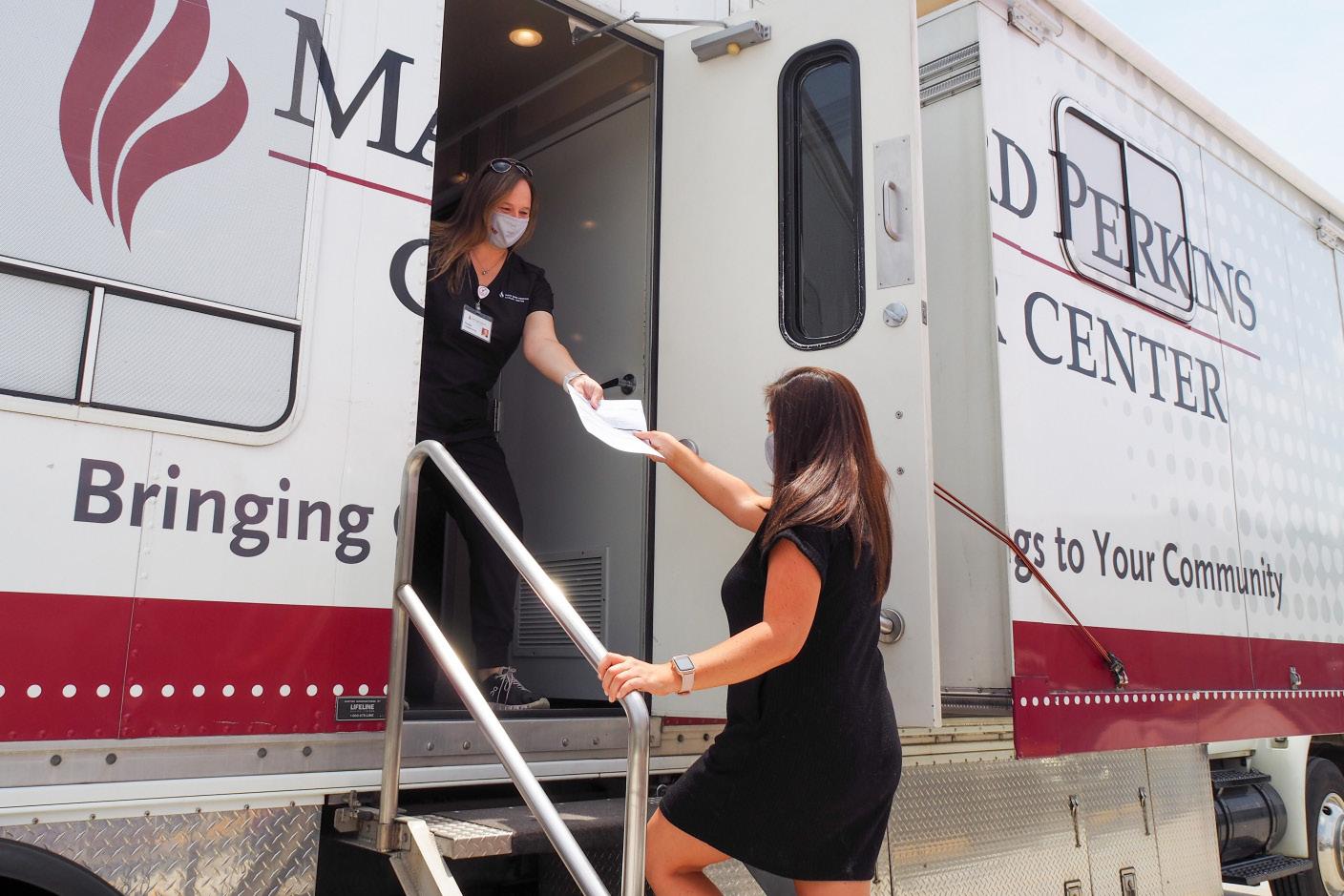
A patient enters a mobile Mary Bird Perkins cancer screening unit.
on digital health innovation, launching its first telehealth programs in 2009 and its innovation company, innovationOchsner (iO), in 2015. Quirk says Ochsner has been working to transition from a system that delivers healthcare to one that delivers health. “I would like to see dramatic improvements in health outcomes as a result of more predictive, proactive, personalized and participatory health and wellness.”
While the proliferation of digital health has been a positive outcome, the pandemic also exposed longstanding inequities in the country and in our state. These inequalities, like economic stability, mobility, access to quality education or even grocery stores with healthy foods, contribute to the risk of chronic health diseases and affect a wide range of health and quality of life outcomes.
This uneven access is one reason Mary Bird Perkins Cancer Center (MBPCC) launched its Prevention on the Go Program in 2002. At the time, more than 60% of patients had never been screened before. Today, that number sits at about 30-35%, says Todd Stevens, president and CEO of MBPCC, but he believes we still have a long way to go.
“The most often cited reasons for not participating in annual wellness exams and
cancer screenings is time and cost,” Stevens says. That’s why MBPCC started bringing curbside cancer screenings and prevention education to communities least likely to participate in annual cancer screenings. “Hospital systems have made significant strides in primary care programs, driving information to patients about wellness, keeping up with their annual screenings, the harmful effects of smoking and the importance of living a healthy lifestyle,” Stevens says. But he believes the future of wellness and prevention will be driven by the employer. That’s why MBPCC further developed Prevention on the Go to bring mobile medical care to the workplace. “Employers have embraced the culture of wellness in the company—it’s good business to have a healthy workforce.”
The Prevention on the Go Workplace Program is designed to eliminate time and financial barriers to preventative and early detection measures to keep workers healthy and reduce employer and employee healthcare costs in the long run.
“As workforce challenges continue, employers are going to have to make great workplaces—it’s not just about paying higher wages,” says Stevens. “I think we will continue to see employers get creative in offering a healthy, motivating, supportive workplace environment. It’s good for their mental and physical health and their job development which is ultimately good for the employer.”
Todd Stevens, CEO of Mary Bird Perkins Cancer Center
Curtis Chastain, physician and director of Lake Men’s Health System at Our Lady of the Lake Regional Medical Center.
And the employers themselves must take good care of their health as well. When Mike Hollingsworth, owner of Hollingsworth Richards Automotive Group in Baton Rouge, went in for his yearly physical, he seemed at the peak of health. At 58 years old, he worked out six times a week, maintained a healthy weight and led an active lifestyle. And Hollingsworth is also a member of the Lake Men’s Health Center’s Executive Wellness Program at Our Lady of the Lake (OLOL), a program tailored to busy professionals to receive comprehensive care in a single, convenient appointment. Curtis Chastain MD, internal medicine doctor and director of the Lake Men’s Health System at OLOL had been seeing him annually.
“When Mike came in, I found severe blockages in all three of his coronary arteries. I perform this heart test as part of most routine annual physical exams to look for the possibility of ‘hidden’ heart blockage,” says Dr. Chastain, who appreciates that he can spend more time listening to and evaluating the patients with this model of care. “He wasn’t having any symptoms at all. But this particular year he was needing to make some significant financial decisions about the future of his business, and he wanted to know the exact status of his heart.”
Concierge medicine or subscription-based medical care—patient-centered, personalized care rooted in accessibility

and convenience—such as the Executive Wellness Program is paramount for many.
This model of healthcare delivery allows for same-day or next day appointments, no waiting rooms, no administrative delays, unlimited office visits and unlimited time with your doctor. Dr. Chastain refers to this model as the “Uber of medicine”—you pay an annual fee for a slate of services and get on-demand, around-the-clock access to your doctor through calls, texts, emails and video visits, talking to your doctor about anything from a concerning mole to a lingering cold to anxiety and depression.
In the years since he started his practice, Dr. Chastain found his patients want two things: access and someone who will listen.
“It’s all about relationships,” he says. “It’s about getting the care you need today and giving people peace of mind that their chronic headache isn’t a tumor.”
Peace of mind across all healthcare entities is about providing for the health of the patient today, before dealing with a health crisis tomorrow. Through accessibility, mobility and technology, health care providers are giving patients the tools needed to stay on top of their own wellness.
“The future of healthcare will be driven by consumer choice,” he says. “The public is going to demand access, quality care and cost transparency, and the industry has to adapt, or it will fail.”
It’s all about relationships.
Curtis Chastain, physician and director of Men’s Health System at Our Lady of the Lake Regional Medical Center
